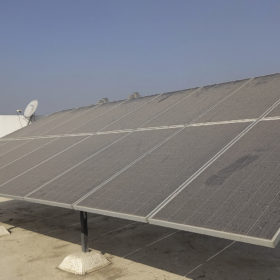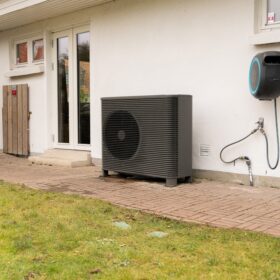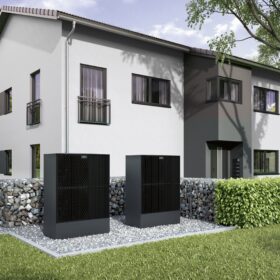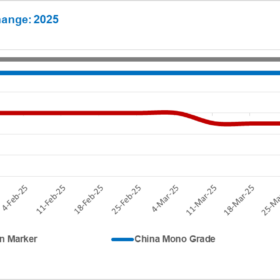Preventing soiling with surface textured photovoltaic dummies
Scientists in South Africa have used computational fluid dynamics to investigate whether a dummy panel, placed in front of a working PV panel, can mitigate soiling. They have tested this setup with various inclination angles, heights, and distances and have found that the dummies accumulated up to 58% more dust than the PV panels.
Chinese PV Industry Brief: Polysilicon, solar module prices continue to slide
Polysilicon prices fell again this week amid weak market activity and elevated inventories, according to industry sources. Downstream wafer, cell, and module prices also continued to slide, with modules now trading as low as CNY 0.68 ($0.09)/W.
UK unveils ‘smart ready’ heat pump regulations, new utility flexibility rules
Heat pump manufacturers will need to meet ‘smart ready’ standards under new appliance regulations, including stricter rules on cybersecurity. Utilities will be obligated to ensure battery energy storage systems, heat pumps and electric vehicle smart charge points can work across different tariffs under tariff data framework.
Viessmann launches new residential air-to-water heat pumps
The Germany manufacturer said its new heat pump systems use propane (R290) as the refrigerant and are able to provide a maximum flow temperature of 70 C. Their coefficient of performance ranges from 4.7 to 5.1.
Chemitek Solar launches new antistatic soiling mitigation coating
The Portuguese company said its new anti-soiling solution lasts for at least a year. It can be applied during routine cleaning operations by mixing it directly in the cleaning water.
How to combine photovoltaics with rainwater harvesting
Scientists have developed a system that harvests rainwater running off PV panels for household use or hydrogen production. Their analysis showed that, in the southern Sahel, the system can meet both the energy and water requirements for electrolysis, with surplus rainwater covering up to 50% of a household’s daily water demand.
Polysilicon prices decline amid growing short-term market pessimism
In a new weekly update for pv magazine, OPIS, a Dow Jones company, reports that prevailing pessimism in the global polysilicon market continues to intensify, with current conditions still favoring buyers to a certain extent, allowing them to retain a degree of leverage in negotiations.
Japanese scientists build bendable perovskite-silicon tandem solar cell with 26.5% efficiency
The tandem device is based on a bottom thin-film heterojunction cell that can bend and a top perovskite cell that can be manufactured with a low-temperature process to prevent damage. It achieved the highest efficiency ever recorded to date for a flexible perovskite-silicon tandem solar cell.
US-based Complete Solaria rebrands as SunPower
Complete Solaria says it acquired SunPower’s assets for $45 million after its bankruptcy, then sold its shingled module patents to Maxeon, which is now owned by China’s TCL Group.
DAS Solar plans 3 GW solar module factory in France
Chinese manufacturer Das Solar says it will open its first European PV panel assembly plant in Mandeure, eastern France, by the end of 2025.










